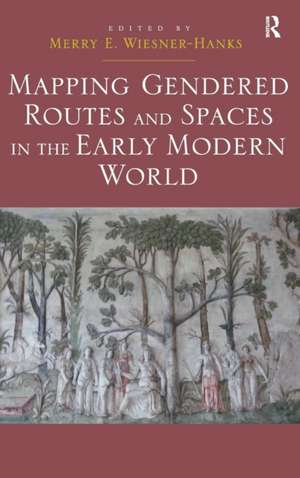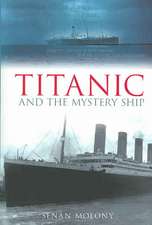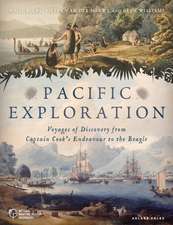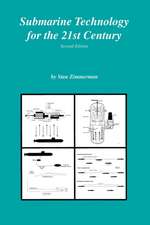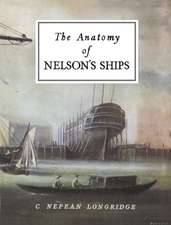Mapping Gendered Routes and Spaces in the Early Modern World
Editat de Merry E. Wiesner-Hanksen Limba Engleză Hardback – 28 mar 2015
| Toate formatele și edițiile | Preț | Express |
|---|---|---|
| Paperback (1) | 389.38 lei 6-8 săpt. | |
| Taylor & Francis – 12 dec 2019 | 389.38 lei 6-8 săpt. | |
| Hardback (1) | 1052.35 lei 6-8 săpt. | |
| Taylor & Francis – 28 mar 2015 | 1052.35 lei 6-8 săpt. |
Preț: 1052.35 lei
Preț vechi: 1283.35 lei
-18% Nou
Puncte Express: 1579
Preț estimativ în valută:
201.36€ • 210.81$ • 166.62£
201.36€ • 210.81$ • 166.62£
Carte tipărită la comandă
Livrare economică 05-19 aprilie
Preluare comenzi: 021 569.72.76
Specificații
ISBN-13: 9781472429605
ISBN-10: 1472429605
Pagini: 398
Dimensiuni: 156 x 234 x 22 mm
Greutate: 1.95 kg
Ediția:1
Editura: Taylor & Francis
Colecția Routledge
Locul publicării:Oxford, United Kingdom
ISBN-10: 1472429605
Pagini: 398
Dimensiuni: 156 x 234 x 22 mm
Greutate: 1.95 kg
Ediția:1
Editura: Taylor & Francis
Colecția Routledge
Locul publicării:Oxford, United Kingdom
Cuprins
Introduction
Part I Frameworks
1 History in the Present Tense: Feminist Theories, Spatialized Epistemologies, and Early Mordern Embodiment Valerie Traub
2 Early Modern Gender and the Global Turn Merry E. Wiesner-Hanks
3 Gender and Representation in the Early Modern Hispanic World Charlene Villasenor Black
Part II Embodied Environments
4 Body Language: Keeping Secrets in Early Modern Narartives Gerhild Scholz Williams
5 Bodies by the Book: Remapping Reputation in the Account of Anne Greene and Shakespeare's Much Ado About Nothing Tara Pederson
6 Envisioning a Global Environment for Blessed Teresa of Avila in 1614: The Beatification Decorations for S. Maria della Scala in Rome Pamela M. Jones
7 Re-Placing Gender in Elizabethan Gardens Sara L. French
8 Attending to Fishwives: Views from Seventeenth-Century London and Amsterdam Alena Buis, Christi Spain-Savage, and Myra E. Wright
Part III Communities and Networks
9 Baby Jesus in a Box: Commerce and Enclosure in an Early Modern Convent Elizabeth A. Lehfeldt
10 Within and Without: Women's Networks and the Early Modern Roman Convent Kimberlyn Montford
11 Women's Kinship Networks: A Meditation on Creative Genealogies and Historical Labor Jennifer Kolpacoff Deane, Julie A. Eckerle, Michelle M. Dowd, and Megan Matchinske
12 Navigating Shakespearean Representations of Female Collaboration John Garrison, Kyle Pivetti, and Vanessa Rapatz
Part IV Exchanges
13 Guides to Marriage and "Needful Travel" in Early Modern England Ann Christensen
14 The "Presences of Women" from the Islamic World in Sixteenth-to Early Seventeenth- Century British Literature and Culture Bernadette Andrea
15 Rival to the Virgin Queen: The Enduring Narrative of Amy Robsart Sheila T. Cavanagh
Part I Frameworks
1 History in the Present Tense: Feminist Theories, Spatialized Epistemologies, and Early Mordern Embodiment Valerie Traub
2 Early Modern Gender and the Global Turn Merry E. Wiesner-Hanks
3 Gender and Representation in the Early Modern Hispanic World Charlene Villasenor Black
Part II Embodied Environments
4 Body Language: Keeping Secrets in Early Modern Narartives Gerhild Scholz Williams
5 Bodies by the Book: Remapping Reputation in the Account of Anne Greene and Shakespeare's Much Ado About Nothing Tara Pederson
6 Envisioning a Global Environment for Blessed Teresa of Avila in 1614: The Beatification Decorations for S. Maria della Scala in Rome Pamela M. Jones
7 Re-Placing Gender in Elizabethan Gardens Sara L. French
8 Attending to Fishwives: Views from Seventeenth-Century London and Amsterdam Alena Buis, Christi Spain-Savage, and Myra E. Wright
Part III Communities and Networks
9 Baby Jesus in a Box: Commerce and Enclosure in an Early Modern Convent Elizabeth A. Lehfeldt
10 Within and Without: Women's Networks and the Early Modern Roman Convent Kimberlyn Montford
11 Women's Kinship Networks: A Meditation on Creative Genealogies and Historical Labor Jennifer Kolpacoff Deane, Julie A. Eckerle, Michelle M. Dowd, and Megan Matchinske
12 Navigating Shakespearean Representations of Female Collaboration John Garrison, Kyle Pivetti, and Vanessa Rapatz
Part IV Exchanges
13 Guides to Marriage and "Needful Travel" in Early Modern England Ann Christensen
14 The "Presences of Women" from the Islamic World in Sixteenth-to Early Seventeenth- Century British Literature and Culture Bernadette Andrea
15 Rival to the Virgin Queen: The Enduring Narrative of Amy Robsart Sheila T. Cavanagh
Notă biografică
Merry E. Wiesner-Hanks is Distinguished Professor of History at the University of Wisconsin - Milwaukee, USA.
Descriere
How did gender figure in the routes and spaces of the early modern world, both real and imagined, from the inner spaces of the body to the furthest reaches of the globe? Essays in this volume address this question from a variety of disciplinary perspectives, with topics key to the ’spatial turn’, such as borders and their permeability, actual and metaphorical spatial crossings, travel and displacement, and the built environment.
